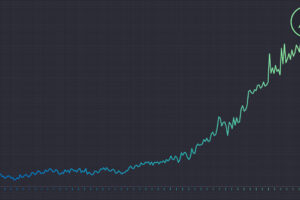The U.S. Supreme Court recently narrowed the circumstances under which a court will defer to an agency’s interpretation of its own regulation. In Kisor v. Wilkie, the Court considered whether to overturn a line of precedent that requires courts to defer to the agency’s interpretation unless it is “plainly erroneous or inconsistent with the regulation.”[1] Although all of the justices agreed to uphold this so-called Auer deference, Kisor may render agencies’ deference “maimed and enfeebled,” at least according to one justice’s concurring opinion. It may also provide banking organizations with new methods to encourage agencies to engage in more open, transparent, and careful decision making.
The Lead-Up to Kisor
History of the Auer Deference
In 1945, the Supreme Court established a fundamental principle of administrative law that, where “the meaning of the words [of an agency’s regulation] is in doubt,” the agency’s interpretation of the regulation “becomes controlling weight unless it is plainly erroneous or inconsistent with the regulation.”[2] The principle came to be applied in a mechanical and highly deferential manner beginning in the 1960s and 1970s with the rise of the administrative state.[3] Although certain Supreme Court justices cast some doubt on its continuing viability in the early 1990s,[4] the Court’s 1997 Auer v. Robbins opinion has generally been seen as reaffirming that an agency’s interpretation should be controlling “unless plainly erroneous or inconsistent with the regulation.”[5]
Significance of Auer Deference through the Years
Auer deference appears to make a difference in outcome. An empirical study of over 1,000 Supreme Court cases found that the Court upheld an agency’s interpretation of its own regulations 91 percent of the time.[6] A similar review of district court and circuit court cases found that the lower courts upheld agency interpretations of agency rules 76 percent of the time.[7] However, the Court in recent years has discussed limits to Auer deference,[8] and more recent empirical analysis has demonstrated a decline in deference to agency interpretations of regulations.[9]
Relevance to Chevron Deference
Auer deference is different and less well-known than “Chevron deference.” In short, application of the doctrines depends on whether the agency interpretation is of a regulation or a statute. Whereas Auer deference may apply to an agency’s interpretation of its own regulations,[10] Chevron deference may apply to an agency’s interpretation of statutes for which it has authority to make rules.[11] Under Chevron, courts will adopt an agency’s interpretation if the statute is ambiguous and the agency’s interpretation is reasonable.[12] Auer and Chevron deference share many similarities; therefore, Kisor could provide insight into the future of Chevron deference. However, Kisor does not purport to directly affect Chevron deference, with two of its concurring opinions explicitly noting that Kisor does not “touch upon” Chevron.[13]
Kisor’s Test
Drawing from the Court’s earlier discussions of the limitations of Auer deference, Kisor sets forth a multifactor test that an agency’s interpretation must pass in order to receive such deference.
- Is the regulation “genuinely ambiguous”? Under Kisor, a court should not apply Auer deference unless a regulation is “genuinely ambiguous.”[14] Although ambiguity has always been a requirement for deference, Kisor provides that a court may make this determination only after exhausting “all the traditional tools of construction,” including the “text, structure, history and purpose of the regulation.”[15] The Court noted that “hard interpretive conundrums, even those related to complex rules, can often be solved” and that a court’s independent, careful consideration of the issue will make Auer deference inappropriate for “many seeming ambiguities.”[16]
- Is the agency’s interpretation reasonable? The interpretation offered by the agency also must fall within the “zone of ambiguity” the court has identified in considering whether the regulation was genuinely ambiguous. In other words, the court’s analysis in the step above not only determines whether a regulation is ambiguous, but also determines the range of reasonable interpretations. Kisor adjures that there should “be no mistake: That is a requirement an agency can fail.”[17]
- Does the “character and context” of the interpretation entitle it to deference? In order to grant Auer deference, the court must also determine that the “character and context” of the interpretation warrants deference. In other words, the court must decide whether is it appropriate to presume that Congress would have wanted the agency to resolve the particular interpretive issue presented.[18] The Court gave “some especially important markers” under this inquiry and noted other considerations could be relevant.[19]
- Was the interpretation actually made by the agency? Kisor explains that the interpretation must be the agency’s “authoritative or official position” in order to receive deference.[20] Although this standard encompasses more than just interpretations directly approved by the head of the agency (g., official staff memoranda published in the Federal Register), it does not include every memorandum, speech, or other pronouncement from agency staff.[21] The interpretation “must at the least emanate from those actors, using those vehicles, understood to make authoritative policy.”[22]
- Does the interpretation implicate the agency’s substantive expertise? The Court explained that, generally, agencies have a nuanced understanding of the regulations they administer, such as when a regulation is technical or implicates policy expertise.[23] However, deference may not be warranted where an interpretive issue “falls more naturally into the judge’s bailiwick,” such as a common law property term or the award of attorney’s fees.[24]
- Does the interpretation reflect the “fair and considered judgment” of the agency? Deference also may not be warranted where the agency interpretation creates “unfair surprise,” such as when the interpretation conflicts with its prior interpretation or imposes retroactive liability for long-standing conduct that the agency had never before addressed.[25] Similarly, agency interpretations that are “post hoc rationalizatio[ns] advanced to defend past agency action” should not be afforded deference.[26]
Kisor’s Potential Implications
Kisor’s effect on banking agencies and banking organizations remains to be seen as few cases have yet applied Kisor’s test to an agency interpretation.[27] It is also unclear whether and to what extent Kisor will affect how agencies interpret their own regulations. On the one hand, the potential additional scrutiny of a court may not deter an agency (or its staff) from making questionable interpretations of regulations simply because of the historically low likelihood of banking organizations challenging these agencies in court.[28] On the other hand, Kisor has the potential to affect the agencies and their interactions with banking organizations in a number of significant ways.
Improve Quality of Agency Interpretations and Regulations
Kisor could improve the quality of agency interpretations of regulations (as well as the regulations themselves) for a number of reasons. First, agencies may be more likely to issue interpretations through the head(s) of the agency or other authoritative or official processes, thereby subjecting them to additional review, so that the interpretation can clearly meet the “authoritative or official position” aspect of the Kisor test. Second, the additional rigor of other aspects of the Kisor test may encourage agencies to more carefully consider their interpretations of regulations. Third, agencies may be more willing to consider banking organizations’ views of the meaning of regulations and their underlying rationale prior to issuing official interpretations (through requests for interpretations or otherwise). Kisor should be seen as giving those outside the agencies a greater role in analyzing interpretive questions; the opinion makes clear that an agency’s views regarding the text, structure, history, and policy of the regulation are not the only ones that matter. Rather, these issues are considered independently—as if there were “no agency to fall back on.”[29] Fourth, an agency may be more reluctant to offer interpretations that are likely to fail the Kisor test, such as those that would “unfair[ly] surprise” banking organizations or for which the agency has no particular expertise. Finally, Kisor also appears to decrease any agency’s incentive to issue open-ended or otherwise ambiguous regulations, as it now should be less likely that the agency would receive Auer deference for its interpretation of such a regulation.[30]
Encouraging Notice and Comment Rulemakings
Kisor also could be seen as further cabining an agency’s ability to create binding requirements outside of the Administrative Procedure Act’s rulemaking process.[31] The banking agencies recently have acknowledged that, although law and regulations have the force and effect of law, “supervisory guidance” does not.[32] In other words, supervisory guidance may not be phrased in terms of binding requirements, and an agency may not treat the guidance as if it were binding.[33] However, agency interpretations, like the regulations they interpret, may be phrased as binding requirements and treated as binding.[34]
Of course, agencies are aware of this distinction and may use it to impose binding requirements on banking organizations, sometimes by characterizing statements that appear to be supervisory guidance as interpretations. For example, in a bank’s appeal of a cease-and-desist order issued by the FDIC, the 9th Circuit disagreed with the bank’s argument that the FFIEC’s BSA/AML Examination Manual[35] could not impose legal obligations on the bank, and found that the manual was an interpretation of the FDIC’s regulations entitled to Auer deference.[36] The Kisor test may have led the 9th Circuit to reach a different outcome because the test would have required the court to engage in a much more careful analysis of this question than the two paragraphs the 9th Circuit afforded it.[37] In other words, Kisor’s additional constraints on deference should make it more difficult for agencies to successfully impose binding requirements by issuing interpretations of regulations or characterizing supervisory guidance as an interpretation of a regulation.
The impact of a new Supreme Court case can be easy to overstate, and Kisor may be no exception to this general rule. However, the Kisor test and the Court’s underlying rationale do at least appear to provide new methods to encourage the banking agencies to engage in more open, transparent, and rigorous consideration of interpretive questions.
[1] Kisor v. Wilkie, 588 U.S. __ (2019); see also Bowles v. Seminole Rock & Sand Co., 325 U.S. 410, 414 (1945).
[2] Seminole Rock, 325 U.S. at 414. Even if the court finds that an agency’s interpretation should not be given controlling weight under Auer (or Chevron, discussed below), a court may nonetheless uphold the agency’s interpretation if it finds the interpretation persuasive. This “power to persuade,” generally referred to as “Skidmore deference,” considers factors such as a thoroughness of the agency’s consideration, the validity of its reasoning, and its consistency with earlier and later pronouncements. See, e.g., Skidmore v. Swift & Co., 323 U.S. 134, 141–42 (1944). Some have argued that this weaker form of deference represents no deference at all. Colin S. Diver, Statutory Interpretation in the Administrative State, 133 U. Pa. L. Rev. 549, 565 (Mar. 1985) (“Of course, the ‘weight’ assigned to any advocate’s position is presumably dependent upon the ‘thoroughness evident in its consideration’ and the ‘validity of its reasoning.’ . . . The argument’s pedigree adds nothing to the persuasive force inherent in its reasoning.”).
[3] See Sanne H. Knudsen & Amy J. Wildermuth, Unearthing the Lost History of Seminole Rock, 65 Emory L.J. 47 (2015).
[4] Thomas Jefferson University v. Shalala, 512 U.S. 504, 525 (Thomas, J., dissenting); Shalala v. Guernsey Memorial Hosp., 514 U.S. 87, 108–09 (1995) (O’Connor, J. dissenting).
[5] See, e.g., Kristen E. Hickman & Richard J. Peirce, Jr., Admin. L. Treatise 353 (6th ed. 2019).
[6] William N. Eskridge, Jr. & Lauren E. Baer, The Continuum of Supreme Court Treatment of Agency Statutory Interpretations from Chevron to Hamdan, 96 Geo. L.J. 1083 (2008).
[7] Richard J. Pierce, Jr. & Joshua Weiss, An Empirical Study of Judicial Review of Agency Interpretations of Agency Rules, 63 Admin. L. Rev. 515 (2011).
[8] See Christopher v. Smithkline Beecham Corp., 567 U.S. 142 (2012); Talk America, Inc. v. Michigan Bell Tel. Co., 564 U.S. 50 (2011).
[9] Cynthia Barmore, Auer in Action: Deference After Talk America, 76 Ohio State L.J. 813 (2015).
[10] Although Auer deference generally does not apply to an agency’s interpretation of another agency’s regulations, the D.C. Circuit has held that Auer deference may apply to one agency’s interpretation of another’s rules if Congress had reassigned responsibility for implementing the statute on which the rule was based from the other agency to the first agency. Amerada Hess Pipeline Corp. v. Fed. Energy Regulatory Comm’n, 117 F.3d 596 (D.C. Cir. 1997).
[11] See, e.g., United States v. Mead Corp., 533 U.S. 218, 231–34 (2001).
[12] Chevron U.S.A. v. Nat. Res. Def. Council, Inc., 468 U.S. 837, 842–43 (1984).
[13] Kisor, slip op. at 2 (Roberts, C.J., concurring in part); id., slip op. at 2 (Kavanaugh. J., concurring in judgment).
[14] Id., slip op. at 13–14.
[15] Id., slip op. at 14.
[16] Id.
[17] Id.
[18] Id., slip op. at 15.
[19] Id.
[20] Id.
[21] Id., slip op. at 16.
[22] Id.
[23] Id., slip op. at 17.
[24] Id.
[25] Id., slip op. at 18.
[26] Id., slip op. at 17.
[27] At least three lower court cases applying the Kisor test do not defer to the agency interpretation in question whereas at least another two cases do. Wolfington v. Reconstructive Orthopaedic Assocs. II PC, 935 F.3d 187 (3d Cir. 2019); Romero v. Barr, 937 F.3d 282 (4th Cir. 2019), reh’g denied (Oct. 29, 2019); Am. Tunaboat Ass’n v. Ross, 391 F. Supp. 3d 98 (D.D.C. 2019);N. Carolina Div. of Servs. for Blind v. United States Dep’t of Educ., No. 1:17CV1058, 2019 WL 3997009 (M.D.N.C. Aug. 23, 2019), report and recommendation adopted sub nom. State of N. Carolina v. United States Dep’t of Educ., Rehab. Servs. Admin., No. 1:17CV1058, 2019 WL 4773496 (M.D.N.C. Sept. 30, 2019); Belt v. P.F. Chang’s China Bistro, Inc., 401 F. Supp. 3d 512 (E.D. Pa. 2019).Of the three cases that do not defer, the agency interpretations most commonly failed the “genuinely ambiguous” and “unfair surprise” inquiries. Courts’ characterizations of the impact of the Kisor test have also been mixed. See, e.g., Spears v. Liberty Life Assurance Co. of Bos., No. 3:11-CV-1807 (VLB), 2019 WL 4766253 (D. Conn. Sept. 30, 2019) (“Kisor did not change anything about Auer, but merely explained its application”); Devon Energy Prod. Co., L.P. v. Gould, No. 16-CV-00161-ABJ, 2019 WL 6257793 (D. Wyo. Sept. 11, 2019) (“The Court [in Kisor] chose to restrict the Auer doctrine rather than abolish it.”).
[28] Similarly, agencies may choose to cast their interpretations of regulations as interpretations of the underlying statute, which would subject the interpretation to the test for Chevron deference rather than the Kisor test. As one state supreme court justice recently noted, “Not long ago, the distinction [between Chevron deference and Auer deference] might not matter in a case like this one, because Auer was generally understood to give even more deference to agency interpretations of rules than is accorded to agency interpretations of statutes under Chevron. … The upshot of that shift [due to Kisor] is that while courts previously could have been insensitive to whether the implicit agency interpretation of a statute that they were deferring to under Chevron was actually an implicit interpretation of a rule—because even if it were, deference would be required anyway—accepting that uncertainty is no longer an option. Given that Auer and Chevron have different, non-coextensive limits, it cannot be appropriate to defer to an agency’s implicit interpretation under Chevron unless it is either clear that the agency really is interpreting a statute, or, at a minimum, that the agency’s interpretation would be owed deference under Auer and Kisor even if the agency were interpreting a rule.” E. Or. Mining Ass’n v. Dep’t of Envtl. Quality, 445 P.3d 251, 278 (Or. 2019) (Balmer, J. dissenting). The justice clarified that “[n]ow, Auer’s own application having been restricted, we should not use Chevron to avoid Kisor’s limitations.” Id. at 278 fn. 4.
[29] Id., slip op. at 14.
[30] As the Court noted earlier, Auer deference “creates a risk that agencies will promulgate vague and open-ended regulations that they can later interpret as they see fit, thereby frustrat[ing] the notice and predictability purposes of rulemaking.” Christopher, 564 U.S. at 158. In Kisor, Justice Kagan, joined by Justices Ginsburg, Breyer, and Sotomayor, argues that this criticism of Auer has notable empirical and theoretical weaknesses. Kisor, slip op. at 24–25.
[31] See also Gregg Rozansky, SCOTUS Ruling on the Dept. of Veterans Affairs Regulation Has Implications for the Banking Industry and Supervisors, Bank Policy Institute Blog, June 28, 2019.
[32] Interagency Statement Clarifying the Role of Supervisory Guidance (Sept. 11, 2018) [hereinafter Guidance on Guidance).
[33] See, e.g., U.S. Telephone Ass’n v. Fed. Commc’n Comm’n, 28 F.3d 1232 (D.C. Cir. 1994); Community Nutrition Institute v. Young, 818 F.2d 943 (D.C. Cir. 1987); Pac. Gas & Electric Co. v. Federal Power Commission, 506 F.2d 33 (D.C. Cir. 1974).
[34] The ability to bind courts under Auer deference without notice and comment, Justice Gorsuch argues, “subverts the [Administrative Procedure Act]’s design.” Kisor, slip op. at 18 (Gorsuch, J., concurring in judgment).
[35] As noted by the 9th Circuit, the FDIC itself had characterized the manual as containing the agency’s “supervisory expectations.” FDIC, Financial Institution Letter 17-2010 (Apr. 29, 2010); compare Guidance on Guidance, at 1 (“Unlike a law or regulation, supervisory guidance does not have the force and effect of law, and the agencies do not take enforcement actions based on supervisory guidance. Rather, supervisory guidance outlines the agencies’ supervisory expectations or priorities and articulates the agencies’ general views regarding appropriate practices for a given subject area.”) (emphasis added).
[36] Cal. Pac. Bank v. Fed. Deposit Ins. Co., 885 F.3d 560, 573–75 (9th Cir. 2018).
[37] For example, it is not clear that the 9th Circuit would have concluded, based on its independent analysis of the text, structure, history, and purpose of the FDIC’s regulation, that the FFIEC BSA/AML Examination Manual is within the range of reasonable interpretations that the court identified in its analysis, or that the “character and context” of the Manual warranted deference. See, e.g., Kisor, slip op. at 16 (“So the basis for deference ebbs when the subject matter . . . falls within the scope of another agency’s authority.”) (internal quotations omitted).






